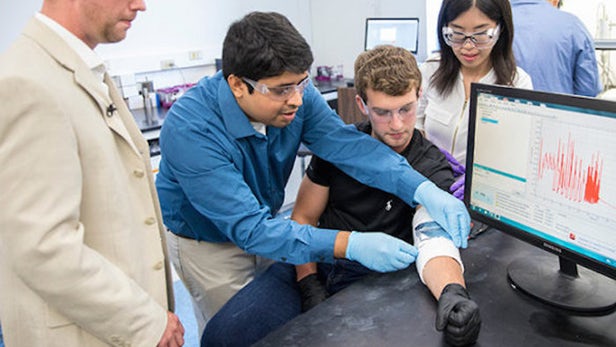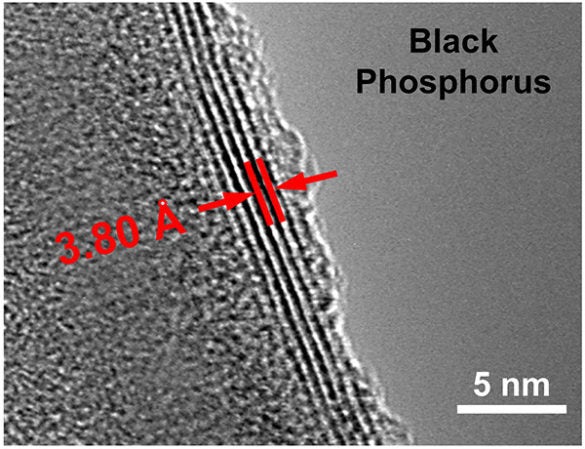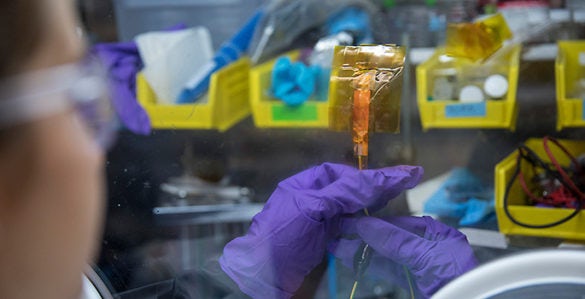Ultra-thin material turns minor movements into electricity

Researchers at Vanderbilt University have developed an ultra-thin material that can produce an electric charge from everyday human movements, such as bending an elbow (Credit: John Russell/Vanderbilt)
In the future, we might overcome anxiety about a dying phone battery by doing a few star jumps. A team from Vanderbilt University is developing an ultra-thin device that can generate electricity from motions as subtle as sitting down, opening up the possibility of clothes that charge phones or light up like an LCD screen.
Different materials are designed to tap into the different types of energy we waste in our day-to-day movements. There are fabrics that generate a charge through friction, thermoelectric devices that harvest body heat, and piezoelectric systems that work on mechanical stress. The Vanderbilt team's device falls into the latter category.
The system is made with tiny layers of black phosphorus, each just a few atoms thick. When the material is bent or squeezed it produces a small electric charge, and its thinness means it can do so from even the smallest movements a person might make in their daily activities. That way, star jumps might not be necessary, as the device works just from walking or even standing.

"Compared to the other approaches designed to harvest energy from human motion, our method has two fundamental advantages," says Cary Pint, director of the research project. "The materials are atomically thin and small enough to be impregnated into textiles without affecting the fabric's look or feel and it can extract energy from movements that are slower than 10 Hz — 10 cycles per second — over the whole low-frequency window of movements corresponding to human motion."
Similar systems, the team says, work best at frequencies of over 100 Hz, which means only the most exaggerated of movements will generate electricity, giving those devices an efficiency of around five to 10 percent. Since the Vanderbilt team's harvester works below 10 Hz, they calculate its efficiency at a much meatier 25 percent.
The material can produce 40 microwatts of power per square foot, and maintain a constant current through extremely slow movements, right down to 0.01 Hz. That said, it does produce a relatively low voltage, on the scale of millivolts, but the team is looking into ways to bump that up.
As for applications, the energy harvested by the device could be fed into phones to keep them topped up, or further down the track, it could power LCD-embedded clothing or more natural, wearable VR controllers.
"When incorporated into clothing, our device can translate human motion into an electrical signal with high sensitivity that could provide a historical record of our movements," says Pint. "Or clothes that track our motions in three dimensions could be integrated with virtual reality technology. There are many directions that this could go."
The research was published in the journal ACS Energy Letters, and the team demonstrates the system in the video below.
Source: Vanderbilt University

